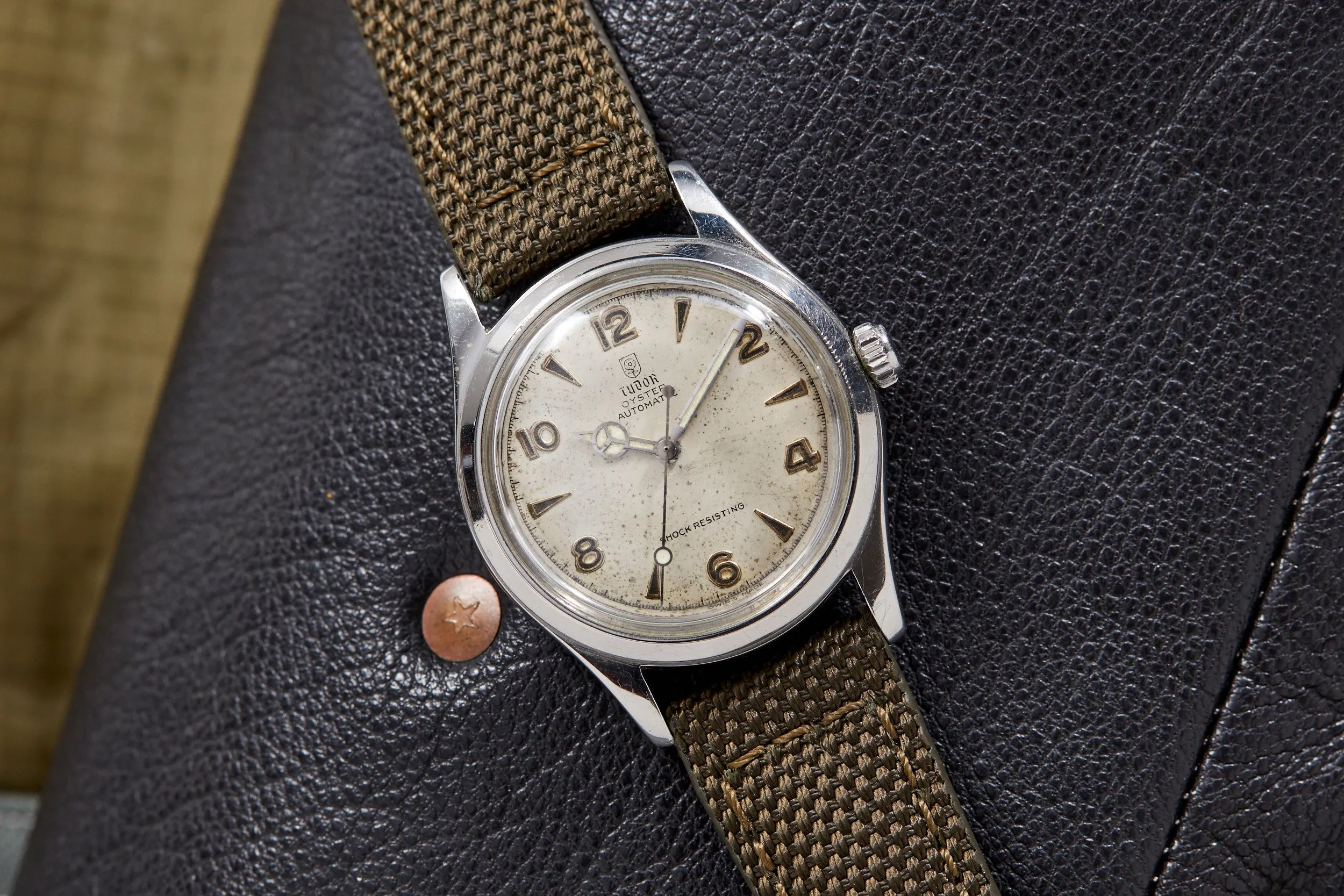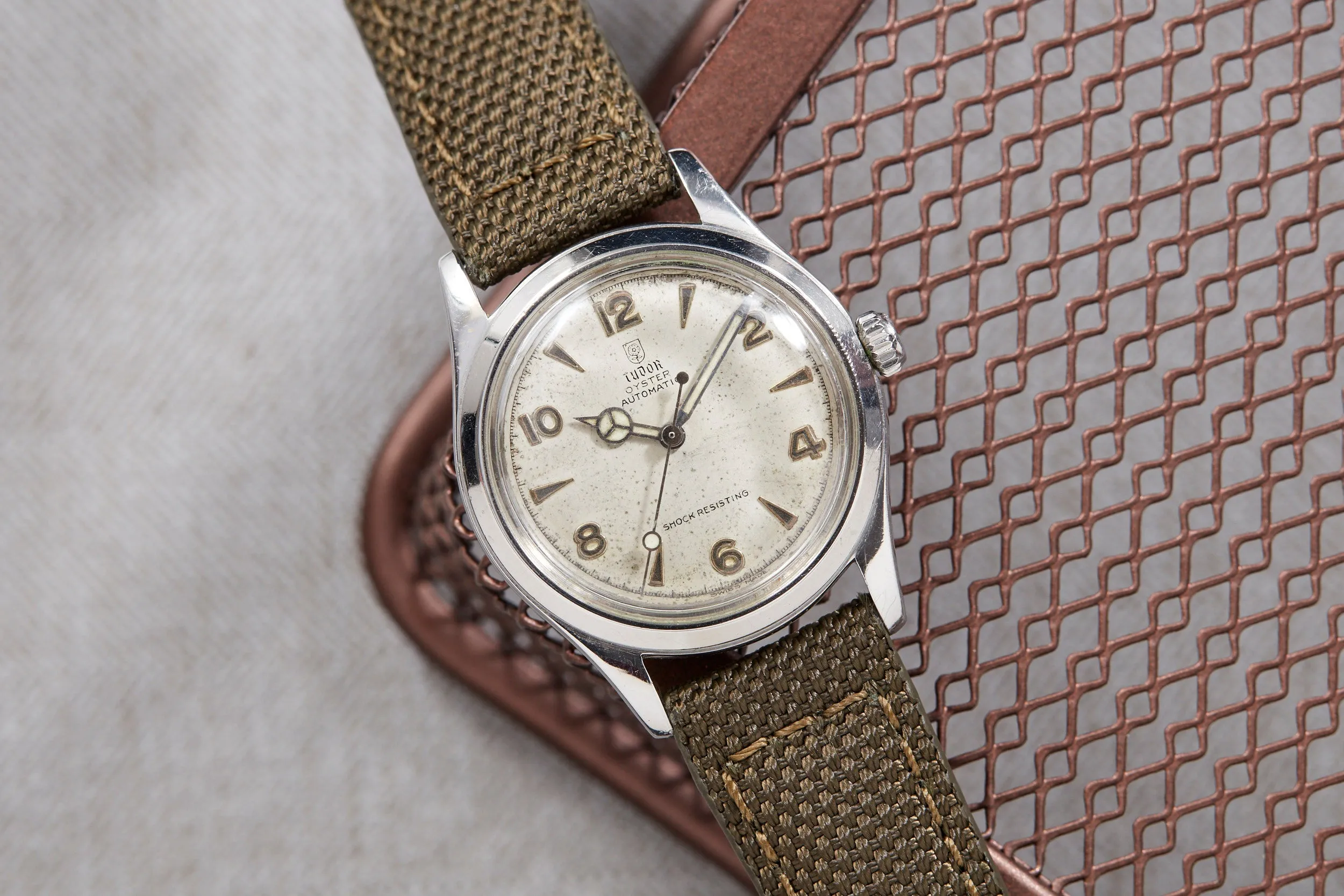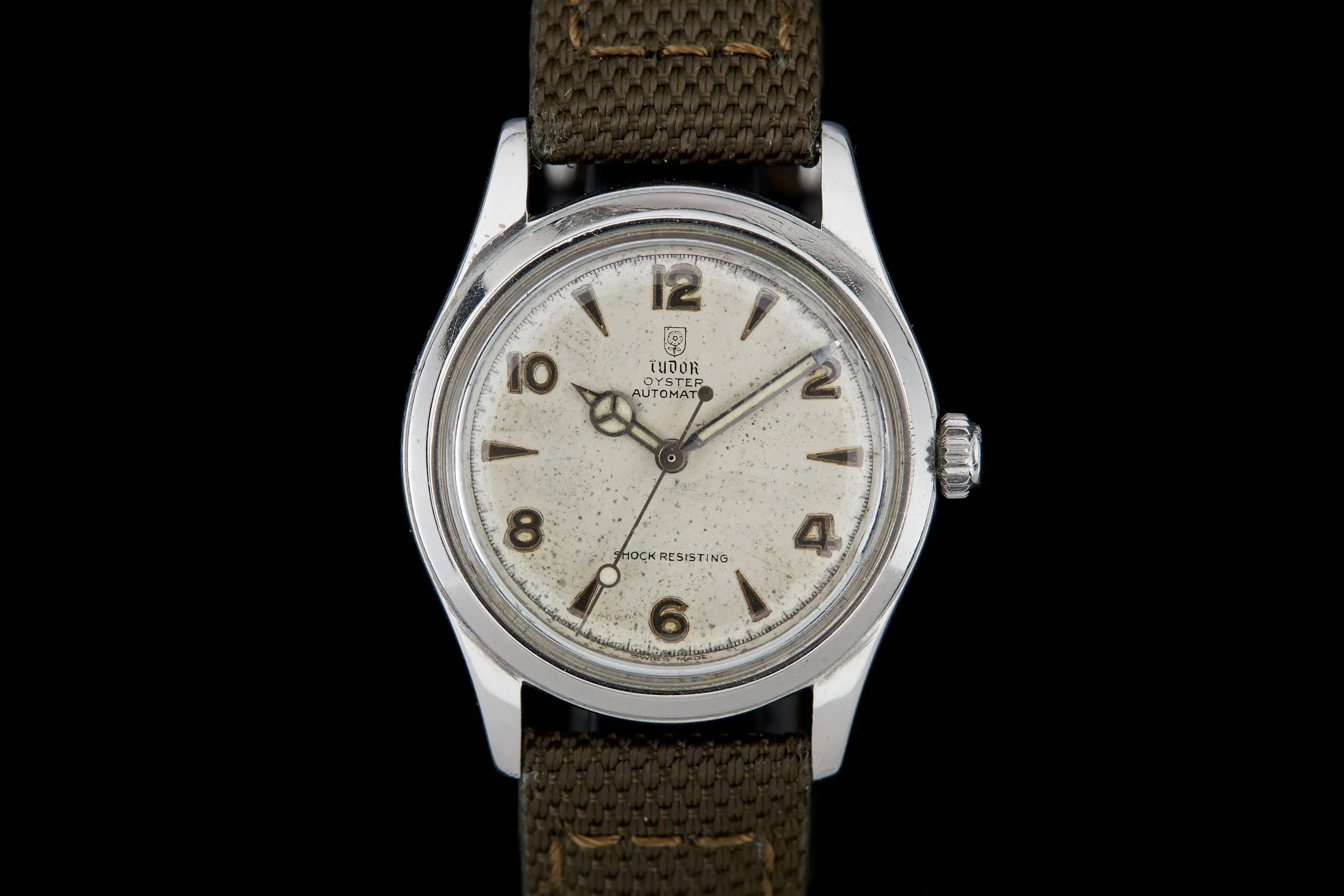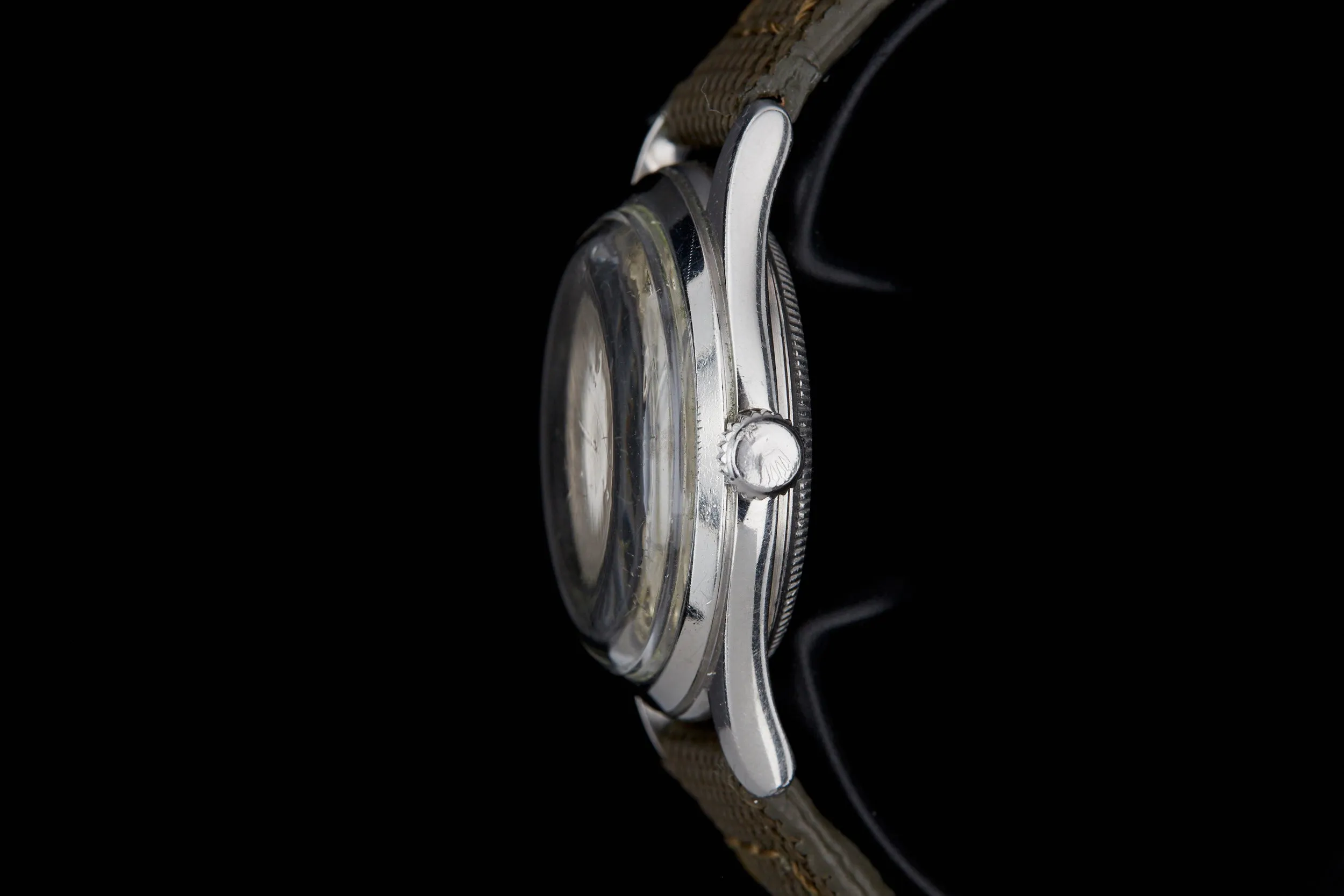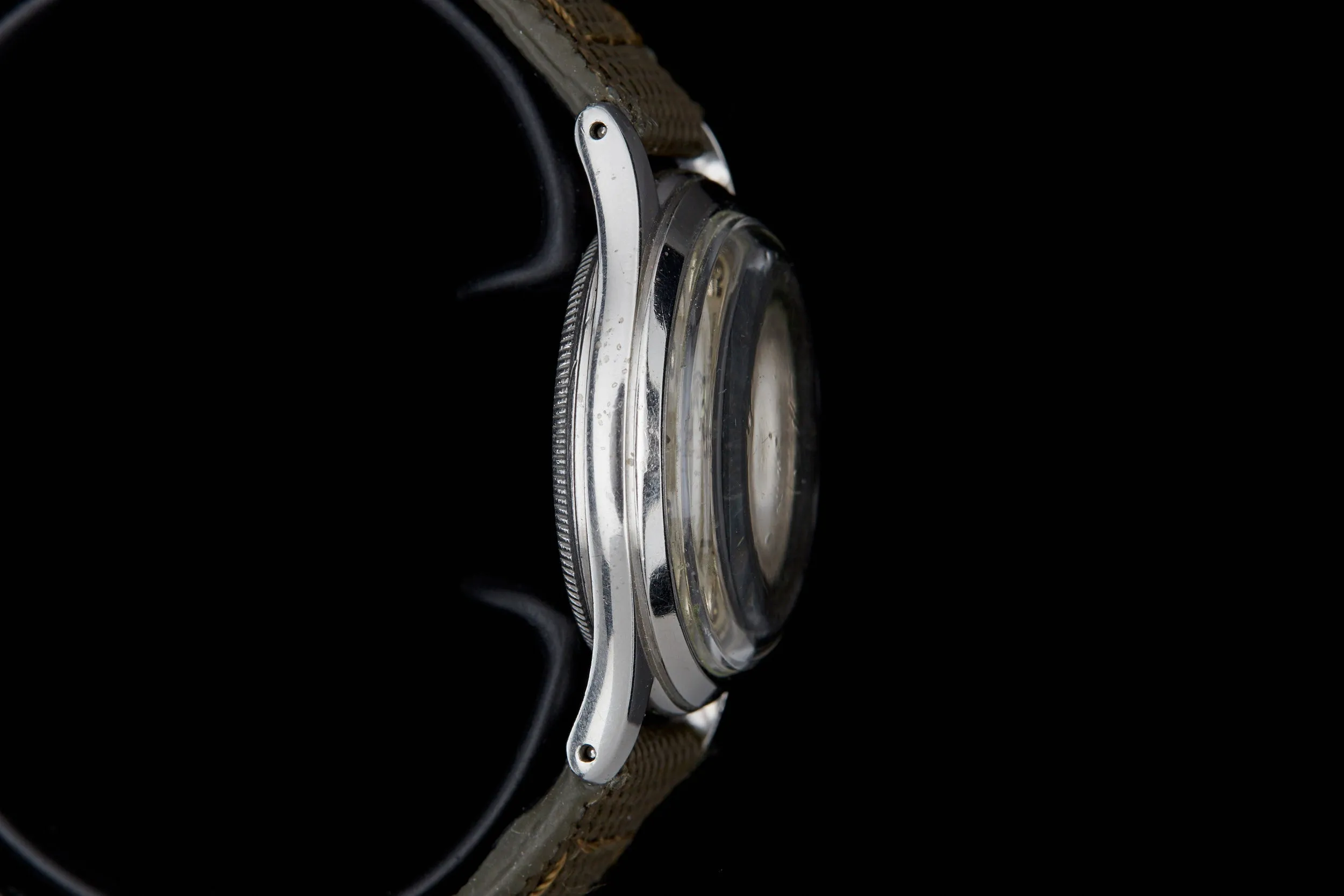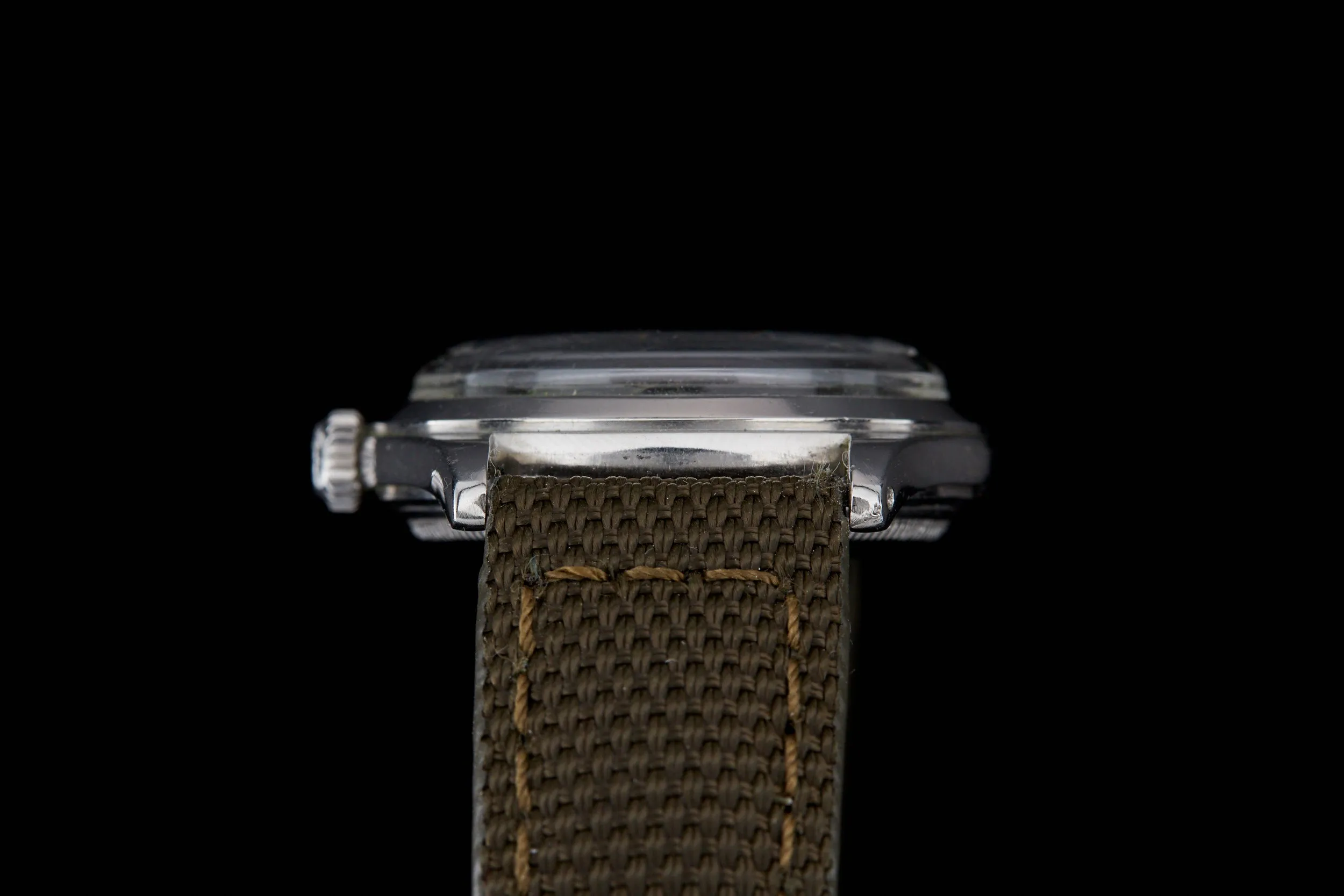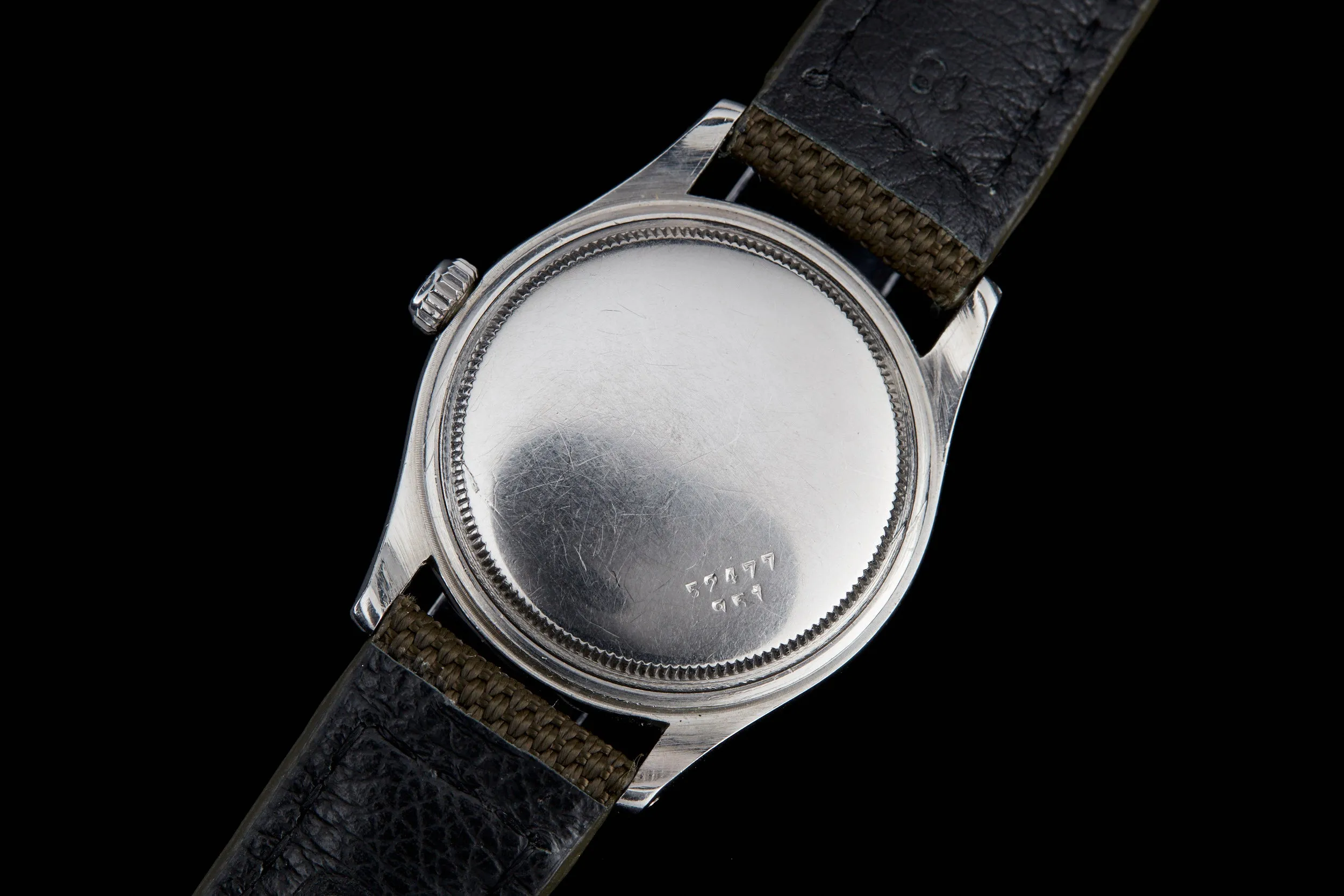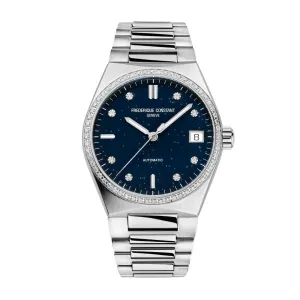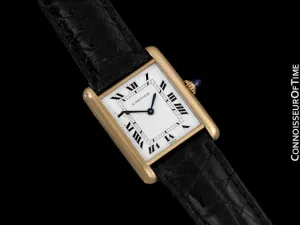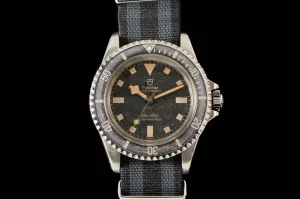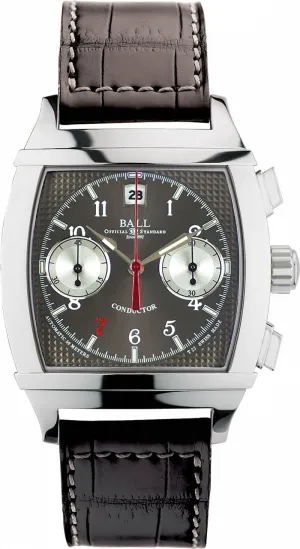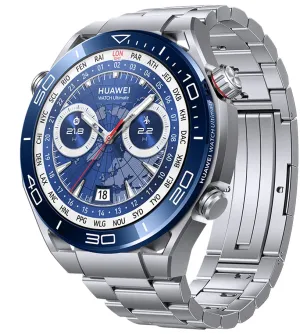Why We Love It
Tudor’s sports models from the 1960s on occupy a special space in the hearts of many collectors. But to focus on that (albeit fruitful) era of Tudor’s history is to overlook some quality pieces. Take this watch, for example, which is one of the brand’s early automatics, dating from the 1940s.
In the early years, Tudor availed itself of movements made by A. Schild or Harwood, one of the pioneers of automatic movements. These were “bumper” wind movements, in which the rotor literally “bumps” off springs inside the case. Wearing these watches, and feeling the rotor bumping against the springs, is a tactile experience that you just don’t get from later automatic watches.
This particular watch shows signs of time well lived. The white dial is heavily patinated, but the coveted “small rose” logo (a hallmark of Tudor’s early years) is still visible. With its compact but sturdy 34mm case, this has all the makings of a robust everyday watch. And, coming from the personal collection of our buddy @, this one's got style-guru provenance to boot!
The Story
When Rolex launched the Tudor Oyster Prince in the 1950s, founder Hans Wilsdorf (who also founded Rolex) intended the watch to be worn by the everyman.
Before the watch’s release, Tudor subjected six Oyster Princes to a “Trial of Destruction” in which a construction worker wore them—one after the other—while operating a jackhammer. After passing each trial, the Prince was heralded with ad campaigns showing construction workers and miners hard at work with watches proudly strapped to their wrists. The watch also saw real-world experience in the harsh environs of the Arctic, with the British North Greenland Expedition, drawing the “extreme admiration” of the men who wore them.
If that isn’t a ringing endorsement, we don’t know what is.




